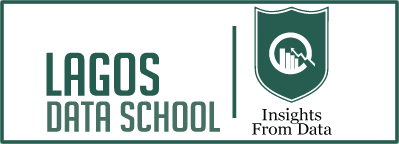Description
The QuickBooks desktop and online course will teach participants how to manage their business finances with QuickBooks Online. This easy-to-use accounting software holds 80% of the market share for accounting software worldwide and has helped millions of small business owners oversee their finances.
Course Content
Part 1: Quickly into QuickBooks
Module 1: QuickBooks: The Heart of Your
Business
Why QuickBooks?
What Explains QuickBooks’ Popularity?
What’s Next, Dude?
How to Succeed with QuickBooks
Module 2: The Big Setup
Getting Ready for QuickBooks Setup
Stepping through QuickBooks Setup
The Rest of the Story
Should You Get Your Accountant’s Help?
Module 3: Populating QuickBooks Lists
The Magic and Mystery of Items
Adding Employees to Your Employee List
Customers Are Your Business
It’s Just a Job
Adding Vendors to Your Vendor List
The Other Lists
Organizing Lists
Printing Lists
Exporting List Items to Your Word Processor
Dealing with the Chart of Accounts List
Part 2: Daily Entry Tasks
Module 4: Creating Invoices and Credit Memos
Making Sure That You’re Ready to Invoice Customers
Preparing an Invoice
Fixing Invoice Mistakes
Preparing a Credit Memo
Fixing Credit Memo Mistakes
History Lessons
Printing Invoices and Credit Memos
Sending Invoices and Credit Memos via Email
Customizing Your Invoices and Credit Memos
Module 5: Reeling in the Dough
Recording a Sales Receipt
Printing a Sales Receipt
Special Tips for Retailers
Correcting Sales Receipt Mistakes
Recording Customer Payments
Correcting Mistakes in Customer Payments Entries
Making Bank Deposits
Improving Your Cash Inflow
Module 6: Paying the Bills
Pay Now or Pay Later?
Recording Your Bills by Writing Checks
Recording Your Bills the Accounts Payable Way
Paying Your Bills
Tracking Vehicle Mileage
Paying Sales Tax
Module 7: Inventory Magic
Setting Up Inventory Items
When You Buy Stuff
When You Sell Stuff
How Purchase Orders Work
Assembling a Product
Time for a Reality Check
Dealing with Multiple Inventory Locations
The Lazy Person’s Approach to Inventory
Module 8: Keeping Your Checkbook
Writing Checks
Depositing Money in a Checking Account
Transferring Money between Accounts
Working with Multiple Currencies
To Delete or to Void?
Handling NSF Checks from Customers
The Big Register Phenomenon
Module 9: Paying with Plastic
Tracking Business Credit Cards
Entering Credit Card Transactions
Reconciling Your Credit Card Statement and Paying the Bill
So What about Debit and ATM Cards?
So What about Customer Credit Cards?
Part 3: Stuff You Do from Time to Time
Module 10: Printing Checks
Getting the Printer Ready
Printing a Check
Printing a Checking Register
Module 11: Payroll
Getting Ready to Do Payroll without Help from QuickBooks
Doing Taxes the Right Way
Getting Ready to Do Payroll with QuickBooks
Paying Your Employees
Paying Payroll Liabilities
Preparing Quarterly Payroll Tax Returns
Filing Annual Returns and Wage Statements
The State Wants Some Money, Too
Module 12: Building the Perfect Budget
Is This a Game You Want to Play?
All Joking Aside: Some Basic Budgeting Tips
A Budgeting Secret You Won’t Learn in College
Setting Up a Secret Plan
Adjusting a Secret Plan
Forecasting Profits and Losses
Projecting Cash Flows
Using the Business Planner Tools
Module 13: Online with QuickBooks
Doing the Electronic Banking Thing
A Quick Review of the Other Online Opportunities
Chapter 14: The Balancing Act
Balancing a Bank Account
Eleven Things to Do If Your Non-Online Account Doesn’t
Balance
Module 15: Reporting on the State of Affairs
What Kinds of Reports Are There, Anyway?
Creating and Printing a Report
Reports Made to Order
Processing Multiple Reports
Your Other Reporting Options
Last but Not Least: The QuickReport
Module 16: Job Estimating, Billing, and Tracking
Turning On Job Costing
Setting Up a Job
Creating a Job Estimate
Revising an Estimate
Turning an Estimate into an Invoice
Comparing Estimated Item Amounts with Actual Item Amounts
Charging for Actual Time and Costs
Tracking Job Costs
Module 17: File Management Tips
Backing Up Is (Not That) Hard to Do
Accountant’s Copy
Working with Portable Files
Using an Audit Trail
Using a Closing Password
Module 18: Fixed Assets and Vehicle Lists
What Is Fixed-Assets Accounting?
Fixed-Assets Accounting in QuickBooks
Setting Up a Fixed Asset List
Tracking Vehicle Mileage
Part 5: The Part of Tens
Module 19: Tips for Handling (Almost) Ten Tricky
Situations
Tracking Depreciation
Selling an Asset
Selling a Depreciable Asset
Owner’s Equity in a Sole Proprietorship
Owner’s Equity in a Partnership
Owner’s Equity in a Corporation
Multiple-State Accounting
Getting a Loan
Repaying a Loan
Module 20: (Almost) Ten Secret Business
Formulas
The First “Most Expensive Money You Can Borrow” Formula
The Second “Most Expensive Money You Can Borrow” Formula
The “How Do I Break Even?” Formula
The “You Can Grow Too Fast” Formula
The First “What Happens If … ?” Formula
The Second “What Happens If … ?” Formula
The Economic Order Quantity (Isaac Newton) Formula
The Rule of 72
